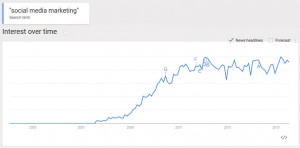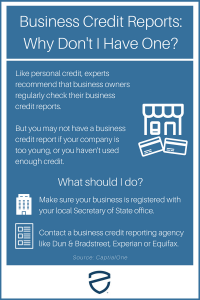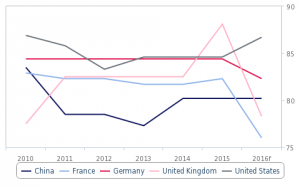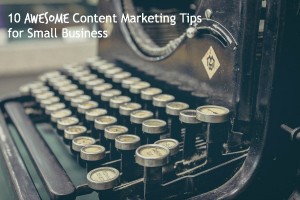— November 26, 2018
There are two things I firmly believe about selling online.
- When the offer is in line with the wants and needs of your prospect, they’re more likely to buy
- Email, all things considered, produces the highest ROI of any other channel online.
Nine times out of ten, the above statements are true.
The problem is that most small businesses don’t do it.
Why do you think that is?
It’s another one of the difficult things business owners must master. Most people think you need to sit down and immerse yourself in data to get it right.
You could if you wanted to but you have a business to run. There are too many other things to do.
In this post, we’re going to explore a few ways to segment email subscribers to increase your open rates, click through rates, and revenue.
First, who are you selling to?
It doesn’t matter if you have one product or one hundred products. There are specific groups of people that visit your website.
If you’re selling items for children under five then you may be targeting mothers. Inside that group of mothers, you have the ones who gave birth last week and the ones who are about to send their kids off to school.
They have different needs.
When you meet those needs, your ability to achieve a sale goes up.
Stefan Debois of Survey Anyplace recommends sending an assessment in one of the first emails to better understand who your audience members are. He says it’s a win-win because participants learn something useful and you collect data for further segmentation.
The first order of business is to break down your addressable market into sub groups you can sell to.
There are a number of ways to go about this which are known as the pillars of segmentation:
- You can look at your analytics data for demographic markers
- You can call your past customer up on the phone and ask a bunch of questions
- Or you can implement a survey
It comes down to which segmentation method works best for your business. Each option is viable so use whichever one you’re most comfortable with. I’ll walk you through how to use a survey to get this information.
Discovery surveys to segment email subscribers
There are a lot of resources online about how to use surveys and the best practices. I won’t get into those details.
Instead, I’ll focus on two questions you should ask and why.
The first question is:
- What’s your biggest challenge when it comes to x?
X is your product or solution.
For children’s supplies, that could be: What’s your biggest challenge when it comes to buying supplies for your child?
This lets you know the different groups you can divide your audience and customer base into. It’ll give you deep insights into why people need your products and how they use them.
The second question is:
- What pressing problem brought you here today?
This shows you what problem they think you can solve for them as well as the types of issues that force people to take action. This will help you hone your messaging and decide on which offers should be most prominent on your website.
Keep running the survey until you have at least fifty answers. The more you have the better. Also, keep in mind that people who give more detailed answers are the most motivated set of customers you have.
Optimize the experience for them.
Analyze your results and break down your audience into four large segments. These segments will cover 80% of your addressable market. The first time you analyze the results, you may get dozens of different groups.
That’s perfectly normal. It’s up to you to combine and ignore some of them. You can’t be perfect for everyone. Once you have your four groups, it’s time to start segmenting your audience when they interact with you.
Will Cannon of UpLead says:
Put your prospects into different categories and tailor the message to each group. Create several templates for each group instead of writing to each recipient one-by-one.
There are three overarching ways to segment your audience.
Surveys and quizzes to segment new leads
For our purposes, surveys and quizzes have the same mechanics. From a conversion rate optimization perspective, quizzes outperform surveys for lead capture in almost every situation.
The process for creating quizzes is straightforward but involved. I’ll focus on the key points which can also be applied to surveys.
- Use seven to ten questions for your quiz (use five or fewer questions for surveys)
- Start with an easy question to warm up your prospect
- Ask your segmenting question (what’s your biggest challenge related to x); the options are the groups you discovered through your initial survey
- At the point of lead capture for quizzes, let them know you’re going to personalize your communication based on their answers (do this at the beginning of the survey)
- The other questions are personalization questions
When creating quiz titles, use a variation of “what x are you?” or “What is your x?”
- What kind of parent are you
- What is your parenting style
Most quiz creation and survey software allows you to send the information you get directly to your email marketing service.
Behavioral segmentation
Behavioral segmentation takes into account the way your users are interacting with your websites and messages.
To do this successfully, you’ll need to be able to track your email subscriber’s activity on your website. Most email marketing services allow you to do this. If yours doesn’t then it may be time to make a switch.
I digress.
Onward.
After someone becomes an email subscriber, you send them the occasional email. With behavioral segmentation, you track which emails they open, which links they click, and which pages they interact with.
Jeroen Corthout of Salesflare puts it well:
At Salesflare we give great importance to only messaging our customers or prospects with things that are relevant to them. That means only sending them things that are of value to them specifically, not asking them to do something they’ve already done and delivering this message in the most low friction way. You’ve received the permission to talk to them through emails and even when communicating at scale you need to show utmost respect for using that permission
For example, someone may have signed up and only interacts with emails and content related to clothes and shoes for children between the ages of 2-4. On your website, they interact with the “toddlers” category and have spent five minutes or more on specific product pages.
What conclusions can you draw?
For starters, you can assume they have a toddler in the house and want to get them a new pair of shoes.
Every email marketing service is slightly different so I won’t be able to walk you through the exact process for setting it up.
The end result you’re after is to score or tag your email subscribers based on their behavior. Once done, you’ll be able to segment them and send relevant messages about items they’ve shown interest in.
Even if you only have one product, you can look at the relevant content they consume and the emails they interact with. Those insights will allow you to segment the subscriber and send them messages that position your product as the answer to their specific use case.
Progressive segmentation
Progressive segmentation is the process of using multiple methods together to segment your users over time.
You may ask your segmentation question at the point of lead capture. After a while, you’ll enrich your profile with behavioral segmentation. As the interaction progresses, you’ll be able to ask specific segmentation questions within your emails.
Let’s touch on the last one in a bit more detail. You may not be able to ask every question in your survey and don’t want to wait for insights from behavioral segmentation.
If you have a single specific question you need to ask your subscribers, then just ask it and use the choice they make to start a new automation, apply tags, and or change their score.
Progressive segmentation should be the type of segmentation you’re working towards. Even though you may start with quizzes/surveys or behavioral segmentation, this should be the end goal. It takes all other methods into consideration to create a robust profile about your customers and audience.
The end result is better messages that sell for you.
Conclusion
Segmentation and personalization has been used in business since the beginning.
A store clerk would size you up when you walked through the door and ask questions that helped them learn more about you. When we migrated online, we seemed to have lost our ability to create personalized experiences.
Technology has finally caught up and it’s cheap enough for us to apply personalization techniques at scale. To take advantage, there’s an important first step.
Segment your audience and customers with a survey to discover the groups that matter to you. The most important questions is “what’s your biggest challenge when it comes to x?”
Once you have your answer, apply the three segmentation methods we spoke about:
- Survey and quiz segmentation
- Behavioral segmentation
- Progressive segmentation
Let me know what kind of segmentation you’re using in the comments below and don’t forget to share.
Digital & Social Articles on Business 2 Community
(64)
Report Post





